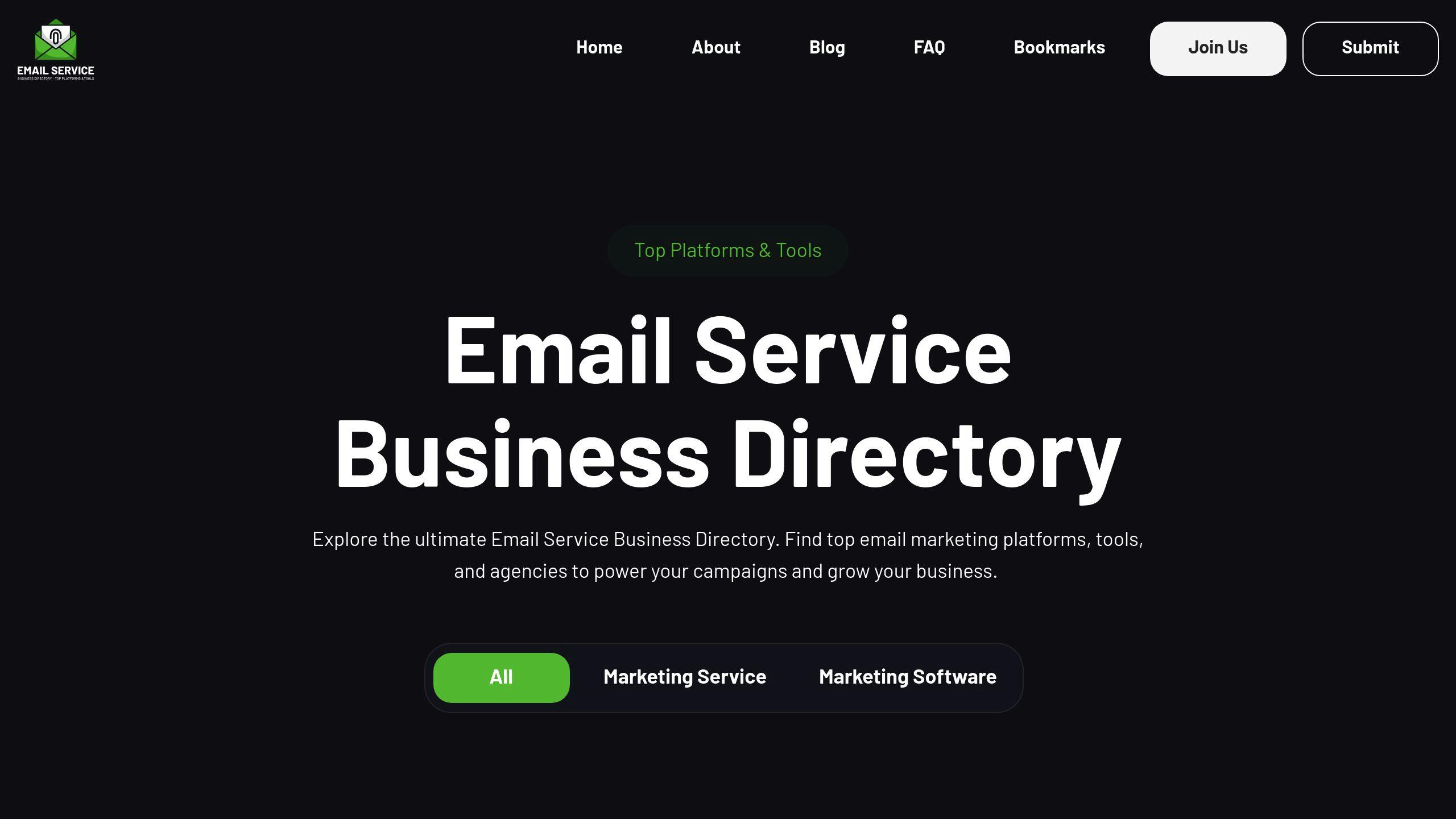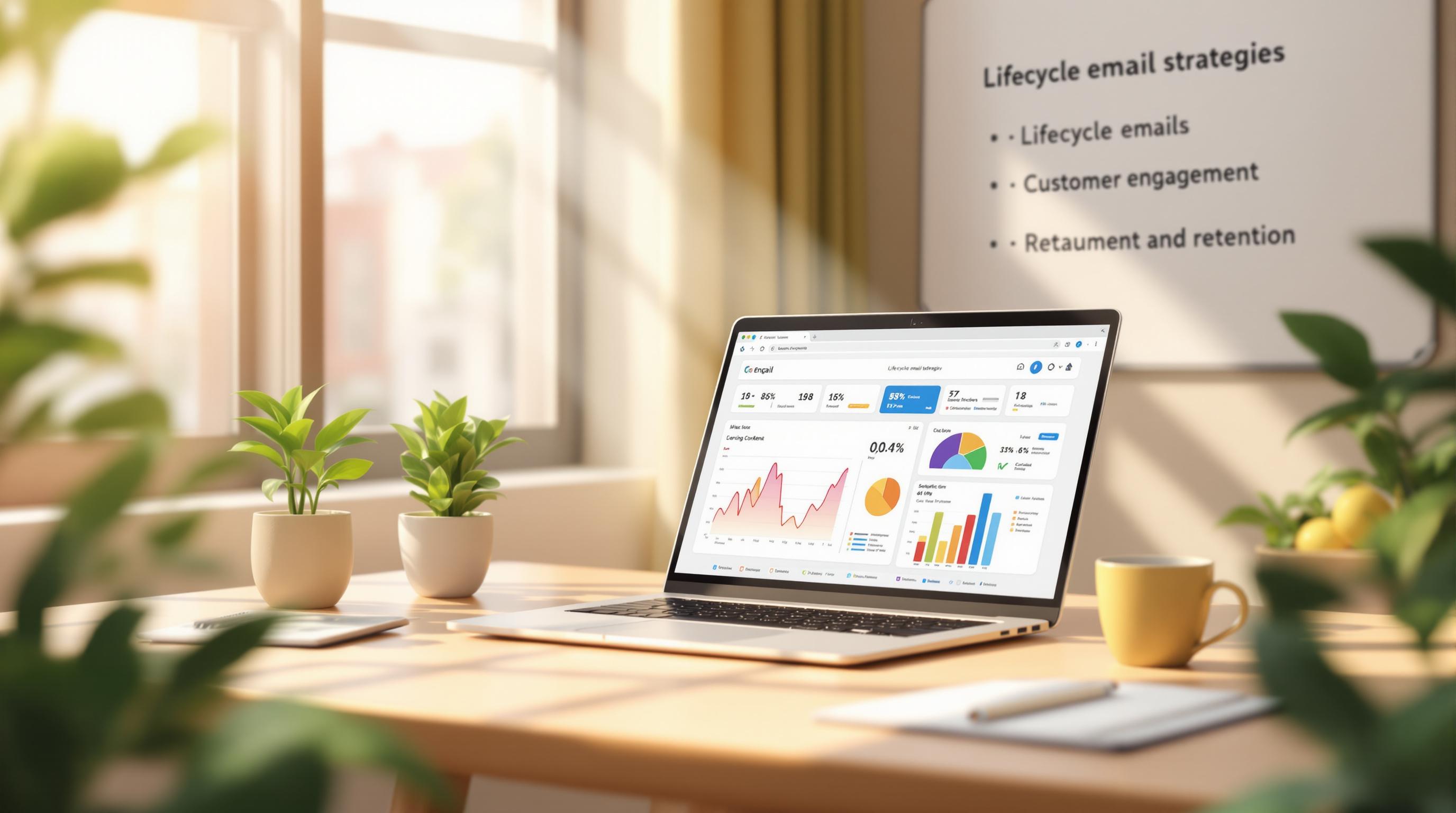Want to know if your email campaigns are making money? Email marketing ROI (Return on Investment) tells you exactly how much profit you're earning compared to what you spend. Here's the formula:
ROI = [(Total Revenue - Total Cost) / Total Cost] × 100
For example, if you spend $1,000 on a campaign that generates $15,000 in revenue, your ROI is 1400%.
Key Steps:
- Track Revenue: Measure income from email-driven sales, subscriptions, or upsells.
- Calculate Costs: Include software, agency fees, freelance support, and staff time.
- Analyze Metrics: Focus on open rates, click-through rates, and conversions to identify strengths and weaknesses.
Why It Matters:
- Helps you spend smarter and improve campaigns.
- Identifies the most profitable strategies.
- Tracks trends to refine future efforts.
Use tools like Google Analytics or email platforms with built-in ROI tracking to simplify the process. Once you know your ROI, you can focus on lowering costs, improving targeting, and driving better results.
Email Marketing ROI Calculator: ROI Goalsetter
Key Data for Calculating Email Marketing ROI
To calculate your email marketing ROI, you need to gather specific data that reflects both the financial results and the performance of your campaigns. Here's what to focus on:
Revenue from Email Campaigns
Track the income generated directly from your email campaigns. This includes sales from products, subscription renewals, upsells, or the overall customer lifetime value linked to your emails. Tools like Google Analytics can help you connect email campaigns to actual sales and conversions. For instance, selling 250 units of a $35 course brings in $8,750 in revenue [3].
Costs of Running Email Campaigns
Knowing your total investment is key to calculating ROI accurately. Common expenses in email marketing include:
| Cost Category | Typical Range | What It Includes |
|---|---|---|
| Software/Tools | $750-$1,000/month | Platforms for emails, automation, analytics |
| Agency Services | $500-$1,400/month | Strategy, content creation, campaign management |
| Freelance Support | $15-$200/hour | Writing, design, and campaign setup |
Don't forget to account for indirect costs, such as the staff hours spent on setting up and monitoring campaigns [2][4].
Performance Metrics to Track
Tracking performance metrics helps you understand how well your campaigns are doing and where you can make improvements. Key metrics include:
- Open rates: Gauge the effectiveness of your subject lines.
- Click-through rates: Measure how engaging your content is.
- Conversion rates: Track how many recipients complete a desired action.
- List growth rate: Keep an eye on how your audience is expanding.
- Bounce rates: Ensure your emails are being delivered successfully.
These metrics give you the context needed for accurate ROI calculations. For example, if your open rates are high but conversions are low, you might need to tweak your call-to-action or offer [3].
Using tools that combine revenue, cost, and performance tracking can simplify ROI calculations. Platforms listed in resources like the Email Service Business Directory can help streamline this process.
Steps to Calculate Email Marketing ROI
Step 1: Gather Your Data
Start by pulling together all the financial and performance metrics from your email campaigns. This includes revenue generated and all associated costs. To ensure accuracy, integrate your email marketing platform with analytics tools to track conversions and attribute revenue properly. Tools like Google Analytics are often paired with email software to capture these details effectively.
Step 2: Apply the ROI Formula
Use the standard formula to calculate your email marketing ROI:
ROI = [(Total Revenue - Total Cost) / Total Cost] × 100
Here’s a quick example: If your campaign brought in $5,000 in revenue and cost $500, the ROI would be 900% [3].
Step 3: Analyze the Results
Compare your ROI to industry standards and your own goals to draw meaningful conclusions. Keep these points in mind:
- Positive ROI: Shows your campaign is making money. Identify what’s working and consider scaling those elements.
- Negative ROI: Signals room for improvement. Look into reducing costs, improving conversion rates, or refining your audience targeting.
Keep an eye on ROI trends over time to better shape your future campaigns. After analyzing your results, explore tools and strategies to make calculations easier and improve performance going forward.
sbb-itb-6e7333f
Helpful Tools for ROI Calculation
Figuring out email marketing ROI gets easier when you use the right tools. These tools not only simplify the process but also give you accurate insights to make smarter decisions.
ROI Calculators for Email Marketing
Free ROI calculators make life easier by letting you plug in numbers like revenue and costs to quickly get results. For instance, these calculators can instantly show how your campaign performed, saving you the hassle of manual math.
Many email marketing platforms now come with built-in ROI tracking. Take GetResponse, for example - it focuses on clear goal setting and detailed cost tracking to ensure accurate ROI results [1]. These tools handle tasks like linking revenue to campaigns, analyzing costs, and tracking performance automatically.
| Feature | What It Does |
|---|---|
| Revenue Tracking | Connects sales directly to campaigns |
| Cost Analysis | Breaks down expenses, including tools and content |
| Performance Metrics | Tracks key indicators in real time |
| Custom Reports | Offers clear insights to improve campaigns |
Exploring the Email Service Business Directory

The Email Service Business Directory is a great resource for comparing email marketing tools and services. It helps you find tools that fit your ROI goals. When browsing, look for options that provide:
- Built-in analytics and tracking
- Integration with major e-commerce platforms
- Automated ROI reporting
- Scalability to grow with your business
Once you know your ROI, you can focus on improving your campaigns to boost profits.
Ways to Improve Email Marketing ROI
Once you know how to calculate ROI, the next step is applying strategies to boost your campaign results.
Make Campaigns More Targeted
Tailoring your emails to specific audience segments can lead to better engagement and conversions. Consider breaking down your audience based on behaviors and preferences, like purchase history or how engaged they are. Here's a quick look at some segmentation strategies and their benefits:
| Segmentation Type | Purpose | Impact |
|---|---|---|
| Purchase History | Focus on repeat buyers | Higher conversion rates |
| Demographics | Offer age or location-specific deals | More relevant messaging |
| Engagement Level | Reconnect with inactive users | Better overall list quality |
| Customer Journey | Share content based on their stage | Increased conversions |
Lower Campaign Costs
Cutting unnecessary expenses is another way to improve ROI. Look for affordable email marketing tools that cover your basic needs. Start simple, and as your campaigns show results, consider upgrading to platforms with more advanced features. Focus your budget on the campaigns that deliver the best results [2].
Use Analytics to Improve Campaigns
Data is your best friend when it comes to refining your email campaigns. By keeping an eye on key metrics, you can make smart adjustments to improve performance [3]. Pay attention to:
- Open rates: See how well your subject lines are working.
- Click-through rates: Measure how engaging your content is.
- Conversion rates: Track how many recipients take the desired action.
- Revenue per email: Understand the financial return of each email.
"Using analytics tools to track the performance of email marketing campaigns and make data-driven improvements is essential. For example, using Google Analytics to track conversions associated with email campaigns can help businesses understand which campaigns are most effective." [3]
Conclusion: Focus on ROI for Better Campaigns
Boosting email marketing ROI is all about creating campaigns that deliver long-term value. By focusing on data and key metrics, businesses can fine-tune their strategies to make smarter decisions and get the most out of their efforts.
Key Points to Remember
Here’s a quick recap of how to calculate and improve email marketing ROI. A solid ROI tracking system helps pinpoint which campaigns perform best and highlights areas that need work. Pairing analytics tools with email platforms makes it easier to track and measure how well campaigns are doing.
To get the most out of your ROI, having the right tools is essential. The Email Service Business Directory offers a carefully selected list of platforms and providers to help businesses find solutions that match their goals. These tools simplify analytics, cut unnecessary costs, and improve campaign results - key steps for long-term email marketing success.
FAQs
What is the average ROI for email marketing?
Email marketing delivers some of the best returns in digital marketing. Research indicates businesses typically earn between $36 and $40 for every dollar spent on email campaigns [1][3].
What costs should I include in ROI calculations?
Make sure to account for these key expenses:
- Email marketing software subscriptions
- Costs for content creation, including copywriting and design
- Third-party tools or integrations
- Expenses tied to list building and maintenance
For a deeper dive into cost breakdowns, check the earlier section on campaign expenses [1][2].
How do I track campaign revenue accurately?
Leverage analytics tools within your email marketing platform to monitor conversions and directly link revenue to specific campaigns. For step-by-step examples, revisit the earlier section on ROI calculations [1][3].
How often should I review my email marketing ROI?
A monthly review of your email campaigns is ideal. This helps you spot trends, make adjustments, and refine your strategy for better results over time [1][3].
What tools can help track and calculate ROI?
Here are some tools to simplify ROI tracking:
- Free calculators, such as Stripo's email marketing calculator
- Built-in analytics tools from email platforms
- Resources like the Email Service Business Directory for comparing solutions
These tools, discussed earlier, can automate tracking and uncover insights to improve your campaigns.


